This post may contain affiliate links. If you click on one and purchase something, I may receive an affiliate commission — at no extra cost to you.
Once the center of western civilization, Rome still embodies its millennia of history. Everywhere you turn in Italy’s capital, you see remnants of centuries, rulers, and peoples past. It’s a city where you constantly discover ancient artifacts on the streets you’ve passed dozens of times before, a place where so much history was made.
No trip to Italy is complete without a visit — here’s how to experience the best of Rome in 3 days.
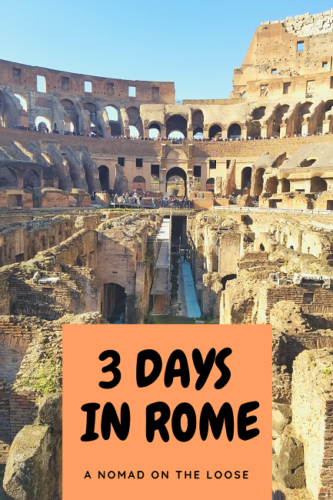
Table of Contents
Getting into Rome from the airport
Fiumicino International Airport, aka Leonardo da Vinci Airport, is the city’s main international airport.
If you’re arriving at an inconvenient hour and want the fastest option, take the Leonardo Express train from the airport into Roma Termini station. The 14 euro ticket is well worth the smooth and fast connection to the city center.
If you have the time or are staying in a neighborhood farther from city center, take one of the local commuter trains (FL1 or FL5) for around 8 euros.
Alternatively, you can also take one of the many airport bus or shuttle offerings (~5-15 euros) or hire a private car (~50-80 euros per car).
Getting around Rome
Despite being one of the largest cities in Europe, Rome is rather walkable within each neighborhood. To get between the neighborhoods, there’s the incredibly extensive and accessible metro system.
You can buy one-ride passes as well as daily and multi-day passes from the ticket kiosks in every station.
Just make sure to have smaller bills on hand. The machine only gives up to 6 euros in change — it’s a tiny detail that got annoying quite fast when we only had ATM-delivered large bills!
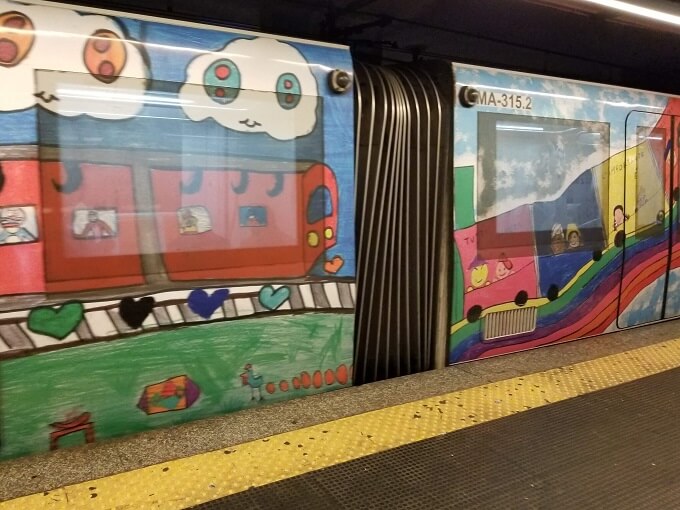
Where to stay in Rome
With its fantastic public transit system in place, you can’t really go wrong with staying in various Roman neighborhoods. I’ve stayed near Vatican City, in the Esquilino neighborhood, and by the train station. (Okay, fine, directly near the train station isn’t the best place, but it’s not a must-avoid spot either.)
Rome is a relatively affordable city.
A 3-star hotel costs anywhere between $50-$250 a night (we enjoyed the music-themed Hotel Franklin Feel the Sound). Budget travelers can snatch a bed in one of Rome’s best hostels for even less.
Of course, if you’ve got a little extra dough, there are plenty of luxurious, 5-star options in Rome as well.
Day 1 in Rome
For your first day in Rome, lace up your walking shoes. While there’s a ton of walking to be done everywhere in Rome, it’s especially heavy on day one.
Hit up Rome’s most popular public spots
Okay, this could be any day during your time in Rome, but do it at least once. Be an early bird and escape the crowds at Rome’s most popular public spots.
Head to the Spanish Steps and enjoy the vast staircase in the peace of dawn. You can even get a photo with no one else in it without the magic of photoshop ;)

Then walk down to the Column of the Immaculate Conception and onwards to Trevi Fountain.
In the early hours as the sun starts to peek its head, you can actually admire the sculptures and toss a coin into the legendary fountain without fearing that someone’s else’s coin toss will accidentally lead to you being pushed into the fountain. (That’s how I felt when I first visited years ago!)
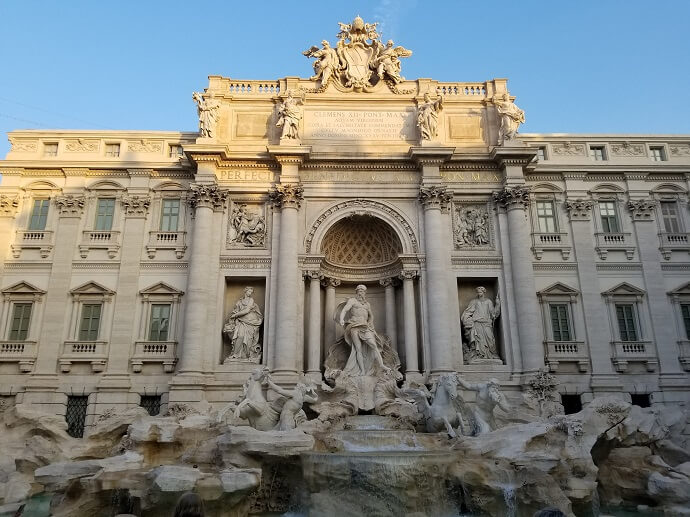
Now that you’ve escaped the mob of tourists at two of Rome’s most crowded places, find yourself a cafe and enjoy a morning coffee and baked good.
Most Italians enjoy their breakfast chow and caffeine standing at the bar where prices are lower and service is faster, but no one will blame you if you choose to rest your feet and sit down to enjoy your espresso and cornetto.
Once you’ve eaten, head over to the Pantheon. This former Roman temple-turned-church is open to the public and free, but it doesn’t open until 9 a.m. on most days.
Take your time admiring this magnificent building that has stood for nearly two thousand years, and you may be as awed as I am every single time at how ancient peoples built such structures. That dome in the rotunda is especially awe-inspiring!
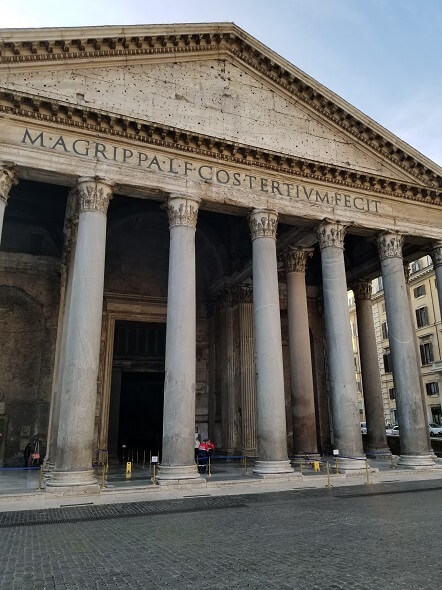
Pro tip: If you can get a lunch reservation at Armando al Pantheon next door, you’re about to experience an amazing meal. Even if you can’t, get there before opening and you may get lucky like we did. It was one of the best meals we had in Italy!
Enjoy Rome’s many parks and villas
In the afternoon, head north just a tad bit for some greenery.
For a large metropolitan city, Rome actually has quite a bit of green space. My favorite is the park around Villa Borghese, which also houses the Borghese gallery. If you like art and landscaping design, you must visit this gorgeous place.
Along with tons of other masterpieces, the museum houses a substantial number of works by master sculptor Bernini and chiaroscuro master Caravaggio.
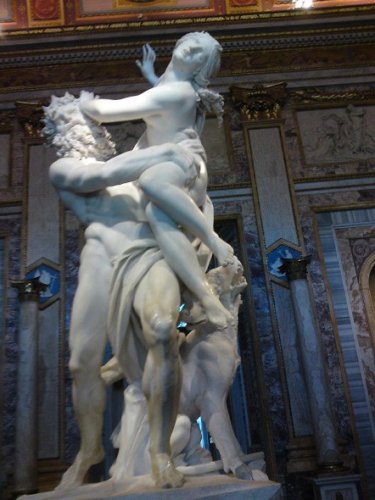
The gardens are worthy of their original purpose- after all, the estate was built as a country villa for the Borghese family — so pack some snacks and enjoy a light picnic on the grounds. (Technically, the gardens also house multiple other villas, including Villa Giulia — now the National Etruscan Museum- and Villa Medici, which is home to the French Academy.)
If you have kids in tow, make sure to also walk over to the Biopark at the edge of the Villa Borghese park compound. The zoo has more than 200 species of animals from around the world.
Day 2 in Rome
On your second day, get deep in Roman history that you learned in history class — and the Roman history that you didn’t learn.
See where Caesar ruled and gladiators fell
If there’s anything associated with Rome these days, it’s gladiators and Julius Caesar. Instead of just watching Russell Crowe in Gladiator or HBO’s Rome, book a ticket to visit the Colosseum, the Roman Forum, and Palatine Hills.
When I first visited years ago, we simply got our tickets at the ticket booth upon arrival and was inside within 30 minutes. But that was the days before global terrorism spiked and security levels across European cities hit high alert.
Today, the Colosseum has a maximum visitor count of 3000 people at a time, and everyone and everything must go through security. So unless you enjoy long lines, I’d highly advise booking in advance.
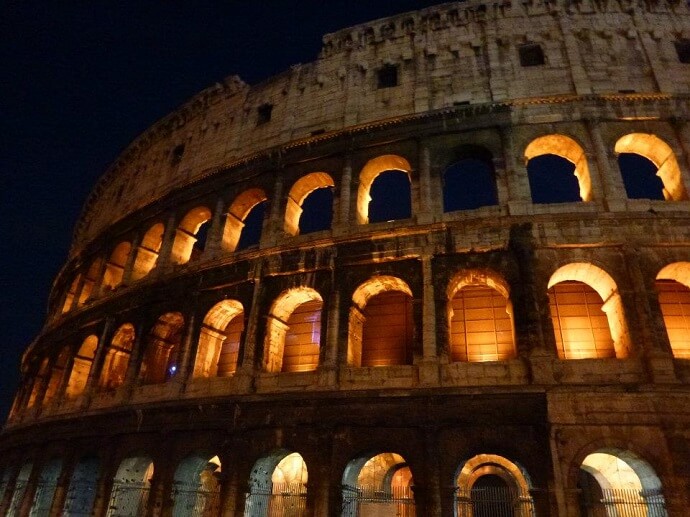
If you have the time, I would recommend adding an underground tour to your combination ticket for an additional 7 euros. The tour is approximately 75 minutes, and you’re welcome to stay and explore the Colosseum on your own after the group disbands. (If the official one runs out, check out this one instead — it also includes skip-the-line access to all the spots!)
Having been to the Colosseum both with and without a tour, I personally felt that the underground tour was worth the money. You get a much more educational experience and access to areas that most visitors never see.
Did you know the ancient Romans likely flooded the Colosseum to host naval battle re-creations? Or that it was eventually used as apartments in the Middle Ages?
No? I didn’t think so. Book your tour ;)
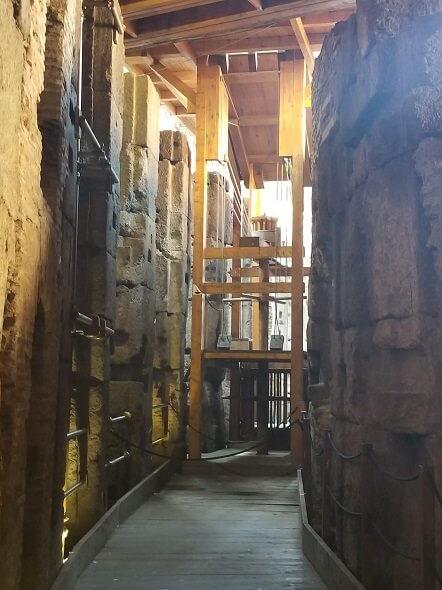
The first underground tour of the day is around noon, so use the time beforehand to visit the Roman Forum and Palatine Hills. You can even enjoy the other two places — which operate with a single entrance — on the day before or after your Colosseum tour date as your ticket is valid for two consecutive days.
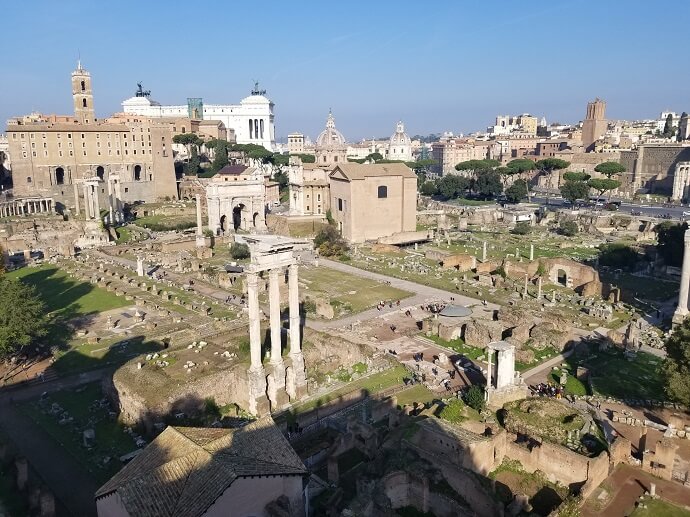
I won’t lie, the Roman Forum is way more interesting if you know at least a good amount of ancient Roman history to be able to visualize what the center of western civilization used to be. But even if you don’t know much, you can walk around and admire the ancient architecture.
And don’t miss climbing up Palatine Hill. It’s included in your ticket, and it offers a tremendous view!
Find history everywhere
With your morning filled with well-known historical places, you may be feeling a little tapped out on history lessons for the day. But no worries, I promise the tidbits I’m guiding you to in the afternoon are bite-sized and easily digestible. And you’re not even going out of your way.
After all, history is everywhere in Rome.
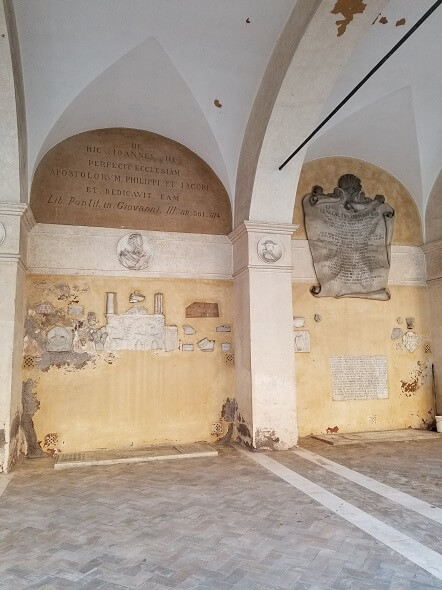
Nothing exemplifies that better for me than Largo di Torre Argentina. This square is home to multiple temples and Pompey’s Theatre, and most famously, it’s the site where Julius Caesar was killed.
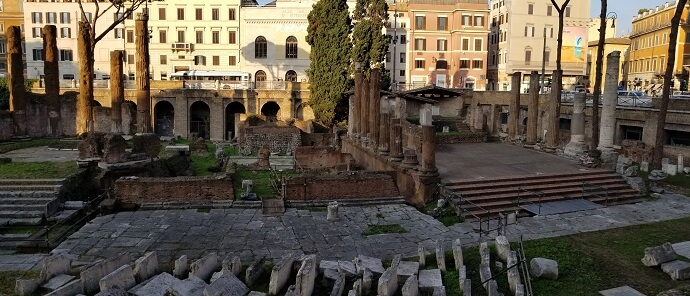
It is literally just there, an excavated site of ancient ruins in the intersection of busy streets. Unless you’re a huge Julius Caesar nerd, you likely didn’t seek it out, didn’t even realize what you’d come across until you read the placard.
And that, is the beauty of Rome.
A few blocks away, you’ll find the Great Synagogue of Rome at the edge of the Tiber River.
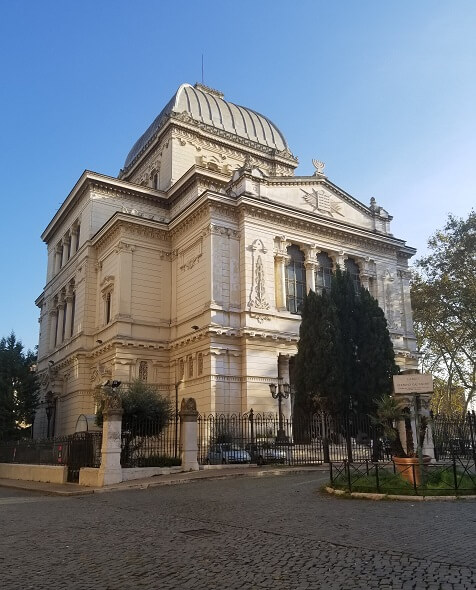
Home to the old Jewish Ghetto, the area today houses ruins from the ancient days, plaques in memory of Roman Jews who were taken away and killed during the Holocaust, and restaurants that continue the tradition of Jewish Roman cooking.
Experience this little bit of Jewish history before heading to the other side of the river.
Check out a hipster neighborhood
En route to the other side, you’ll cross Isola Tiberina, or Tiber Island.
It’s touted as the world’s smallest inhabited island. There are two hospitals, a pharmacy, a restaurant, and two churches (of course). What else could you need?
Once you get over the cuteness of the island and the idea that people very much live there, head on over to the Trastevere district, one of Rome’s hipster neighborhoods.
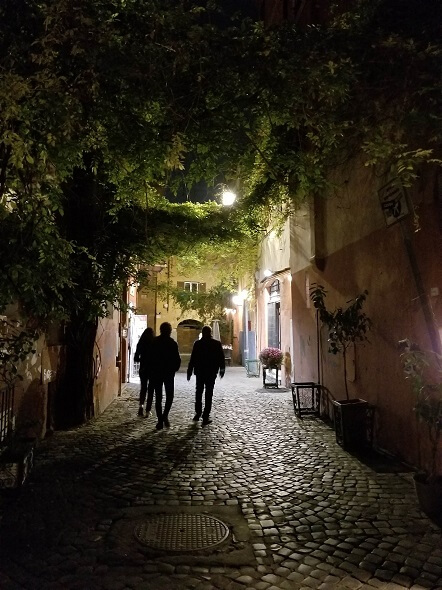
Skip over the main plazas and head to Janiculum Hill first. One of Rome’s famous seven hills, Janiculum Hill is worth the climb. Just time it for sunset.
Then wind down your day in adorable Trastevere.
Grab a traditional Italian apertif like an aperol spritz or negroni sbagliato and sit outside to people watch as night sets in.
Then visit the gorgeous Basilica di Santa Maria Trastevere and enjoy some good homestyle cooking in one of the many trattorias in the neighborhood. Don’t forget to visit Otaleg (gelato spelled backward!) for some delicious dessert before you go.
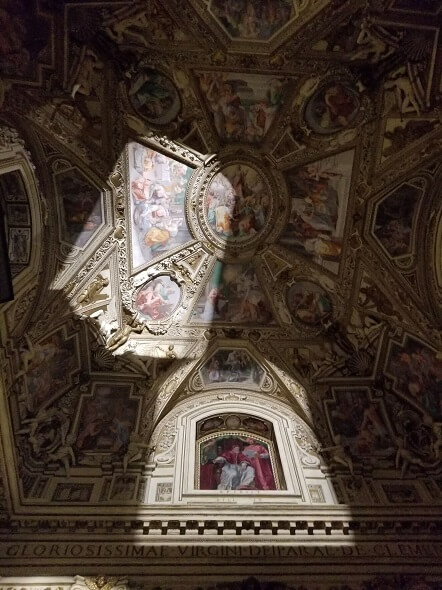
Day 3 in Rome
For your last day in Rome, venture out from the main tourist areas for the first half of the day to explore off-the-beaten-path spots in Rome.
Get into the residential districts
Hold off on breakfast until you get to Mercato Testaccio, a true locals market.
Everything is so fresh and smells so good, it made me sad. Sad because we weren’t staying in a short-term rental and therefore didn’t have a kitchen to cook in. Because man were we tempted to buy everything in that market.
Instead, we bought some cookies for the road, had some traditional Roman tripe sandwiches from Morde e Vai, and enjoyed a cafe under the sun.
Belly full, take your time and just walk around the Testaccio neighborhood to explore.
My favorites included finding the hills of broken amphorae and terracotta clay tiles, remnants of the ancient olive oil trade. I mean, what? How cool is that?!?
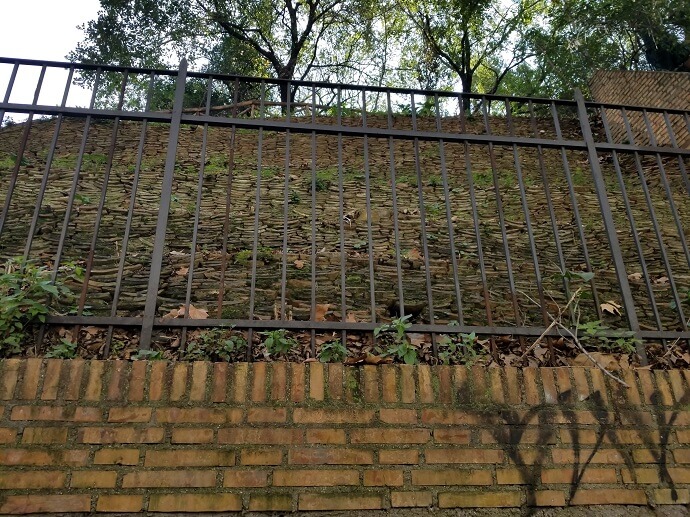
And then there was the Non-Catholic Cemetery, the final resting places of British poet John Keats and many other foreigners who did not ascribe to the country’s main religion.
Next to that, an ancient monument that may seem a little out of place next to the many Grecian columns and Roman temples: a pyramid.
The Pyramid of Cestius was built around 12 BC as a tomb for Gaius Cestius. (Today, you can only go inside on certain days of the month.)
While ancient Rome had historically well-known interactions with ancient Egypt, it was still a surprise to see. I suppose it’s fittingly right next to the cemetery!
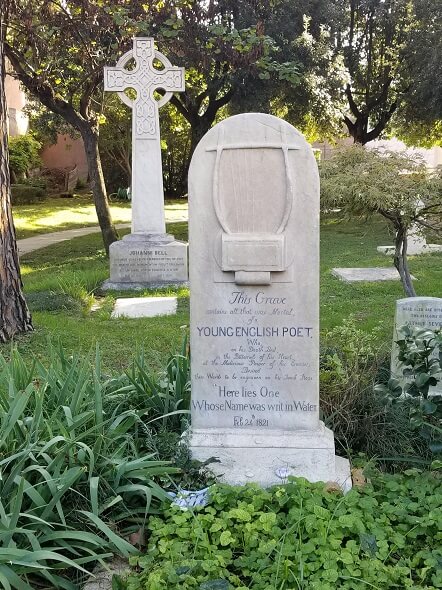
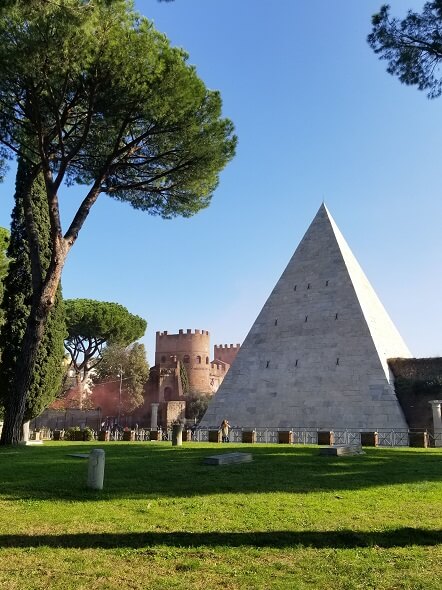
Visit the world’s smallest country
Then “leave” Rome altogether and visit the only country in the world that is wholly located inside a city: Vatican City.
Whatever your feelings about Catholicism and the Catholic Church, you can still visit for the art.
St. Peter’s Basilica, the seat of the Catholic church, is a Renaissance architectural masterpiece. It is also home to some of the greatest western art pieces, including Michelangelo’s Pieta.
Next to it, there’s the Pope’s official residence, also known as the Apostolic Palace. This is home to the famous Sistine Chapel, with instantly recognizable works like The Creation of Adam and The Last Judgment.
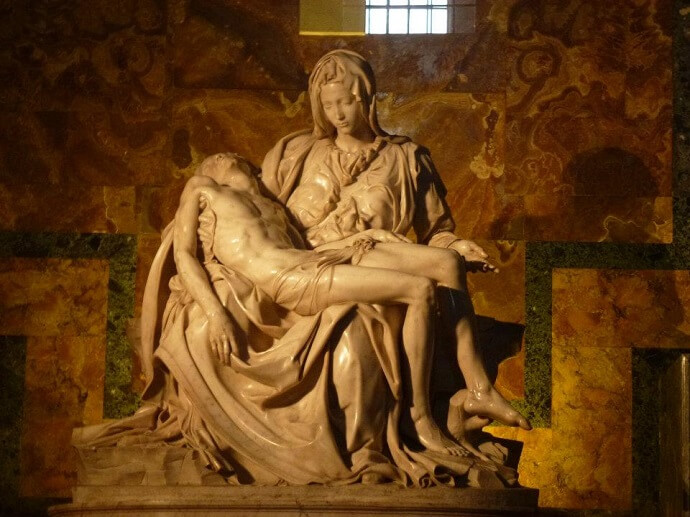

And who knows, you may even see the pope!
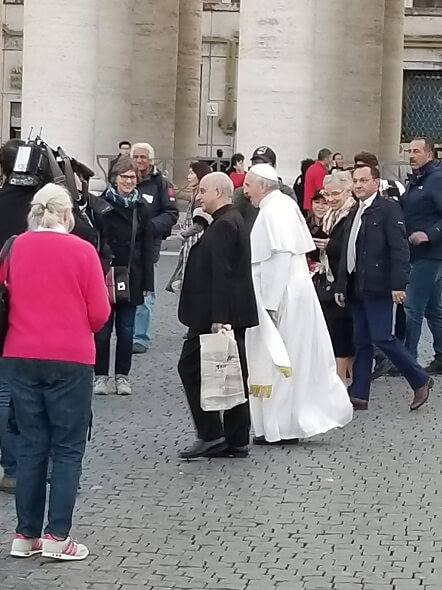
Ready to visit Italy’s capital? Pin it to share it!


I lived in Rome during my semester abroad. I loved it and definitely agree on all of this. Their public transportation is like none I’ve ever found so far & makes the city so easy to get around in. Great post!
I love this post because I feel like there is so much to see and it can be overwhelming! I also really like how you don’t just focus on the most popular sites. Thanks for sharing!